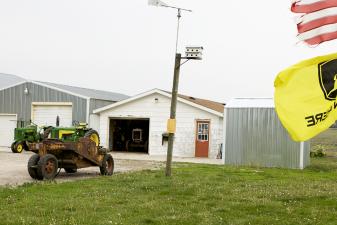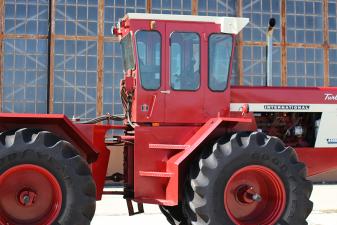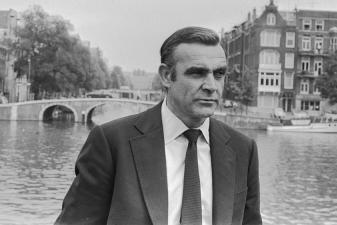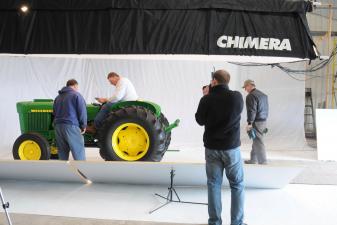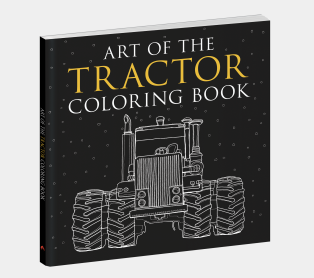1928 Model C Experimental
An Excerpt from The Art of the John Deere Tractor by Lee Klancher

In 1925, Deere & Company found themselves in a game of catch-up with International's newly released Farmall general-purpose tractor. Engineers scrambled to get the Model C Experimental out on the field as quick as possible, and rushed to send it to production. What resulted was an imperfect tractor with a short production run of just over one month. The model, despite imperfections, would be reworked to become the highly successful Model GP.
Read more accounts of John Deere design and innovation in The Art of the John Deere Tractor, and find us at the 2018 Gathering of the Green, March 21–23rd in Davenport, IA.
The Model D was an unqualified success, but International’s brand-new general purpose Farmall was creating a sensation. Deere needed a competitive machine—quickly.
The team in charge of accomplishing this was led by Theo Brown, one of the company’s star engineers. On September 30, 1925, he traveled from Waterloo to Ames, Iowa, to meet with other Deere & Company designers and establish parameters for building a successful machine. On October 5, Brown wrote that he and his team believed the new tractor could use a wide-front design with a cultivator that bolted to the frame, just ahead of the front wheels. On October 16, Brown built a model of the proposed “All-Crop” tractor, and a few days later, the team fastened a crossbar rigged with cultivators to the front of a Fordson. The hand-built unit tested better than expected.
Brown spent December 1 at the factory inspecting a full-sale mockup with Deere & Company President Charles Wiman. “The outfit looks good and the center of gravity not so high as we feared,” Brown wrote. “In two weeks they are to send the model over here and we will put on the cultivator. If everything turns out well we hope to have a tractor in the field by May 1st.”
Brown spent May 19, 1926 testing the new prototype. Refinement ensued steadily. By August 14, Brown wrote, “Our present design is about right.”
As the year wore on, Brown recorded a string of improvements along with all-day meetings spent discussing the merits of various changes. The three-row cultivator was constantly debated, but never rejected. In the spring of 1927, testing continued. Linkages were refined and the radiator was widened.
On February 23, 1928, however, Brown’s dissatisfaction with the machine was evident in his journal. “It seems to me that the view is the real problem now,” he wrote. A few days later, after testing a tricycle front-end model, he felt progress had been made on the principal problem, but he wasn’t entirely satisfied. In a move uncharacteristic for Deere & Company, the machine was sent into production anyway.
The first production Model C appeared on March 15. Its production span was incredibly short, and came to an end on April 20. A few months later, Deere & Company issued a dealer notice stating that the name of the Model C was being changed to Model GP (for “general purpose”).
More than 35,000 Model GPs were sold between 1928 and 1935. The experience taught a segmented company the importance of developing tractors and implements in concert. The Model GP had serious flaws—the three-row cultivator never worked well and the engine was underpowered. Wiman expected—and Broun would find—more satisfactory results with future machines.
The Model C was the forerunner to the Model GP, and fewer than 100 were produced between March 15 and April 20, 1928. In 1931, Deere & Company declared Model Cs “experimental.” The machines were supposed to be returned to the company, rebuilt, and returned to their owners, but at least one survived in original condition. Today it resides with the Kellers.
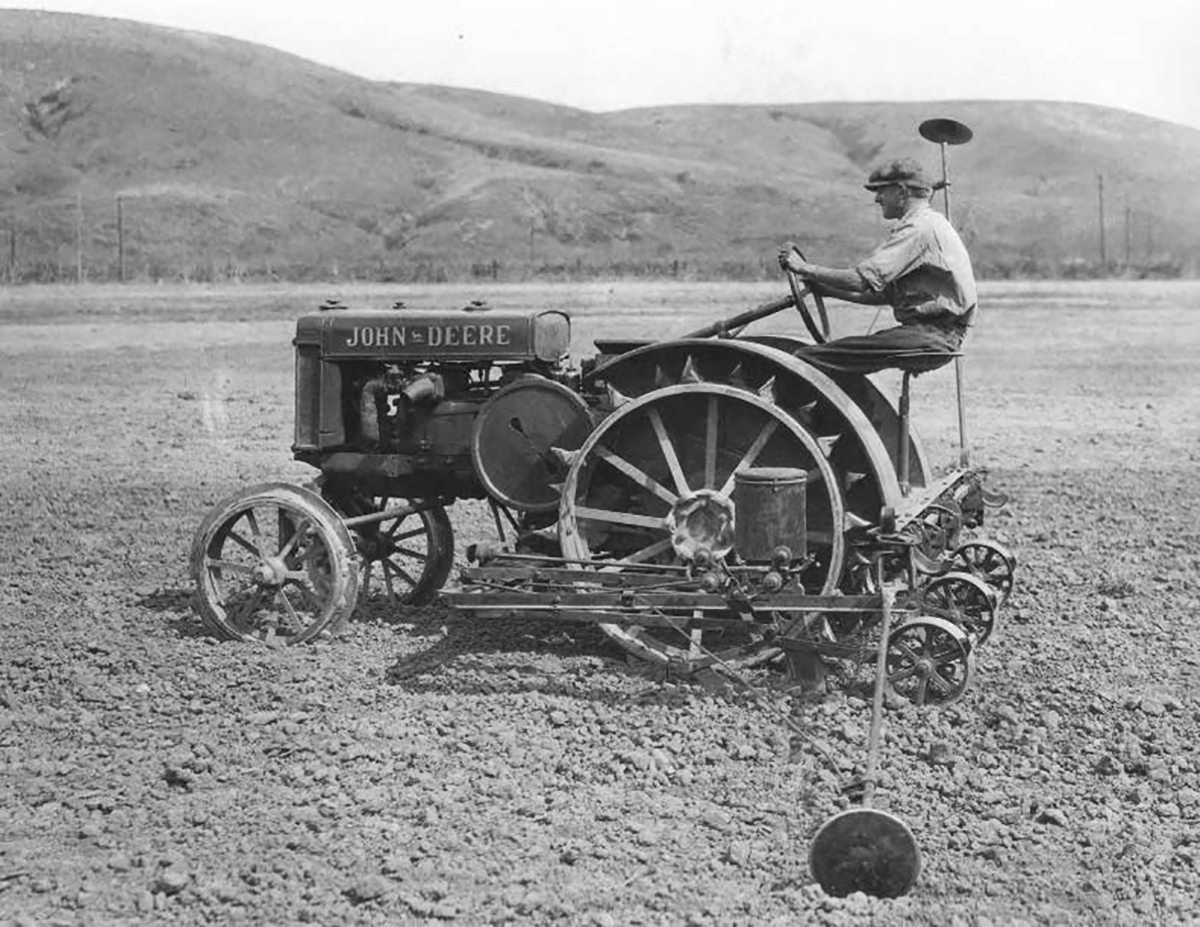 The weld marks on the manifold, as well as the single rib on the fenders, are features present on “C”, serial number 200109, owned by Walter and Bruce Keller of Brillion, Wisconsin. The tractor predates the official start of “C” production. Photo and caption courtesy of Two-Cylinder Library
The weld marks on the manifold, as well as the single rib on the fenders, are features present on “C”, serial number 200109, owned by Walter and Bruce Keller of Brillion, Wisconsin. The tractor predates the official start of “C” production. Photo and caption courtesy of Two-Cylinder Library
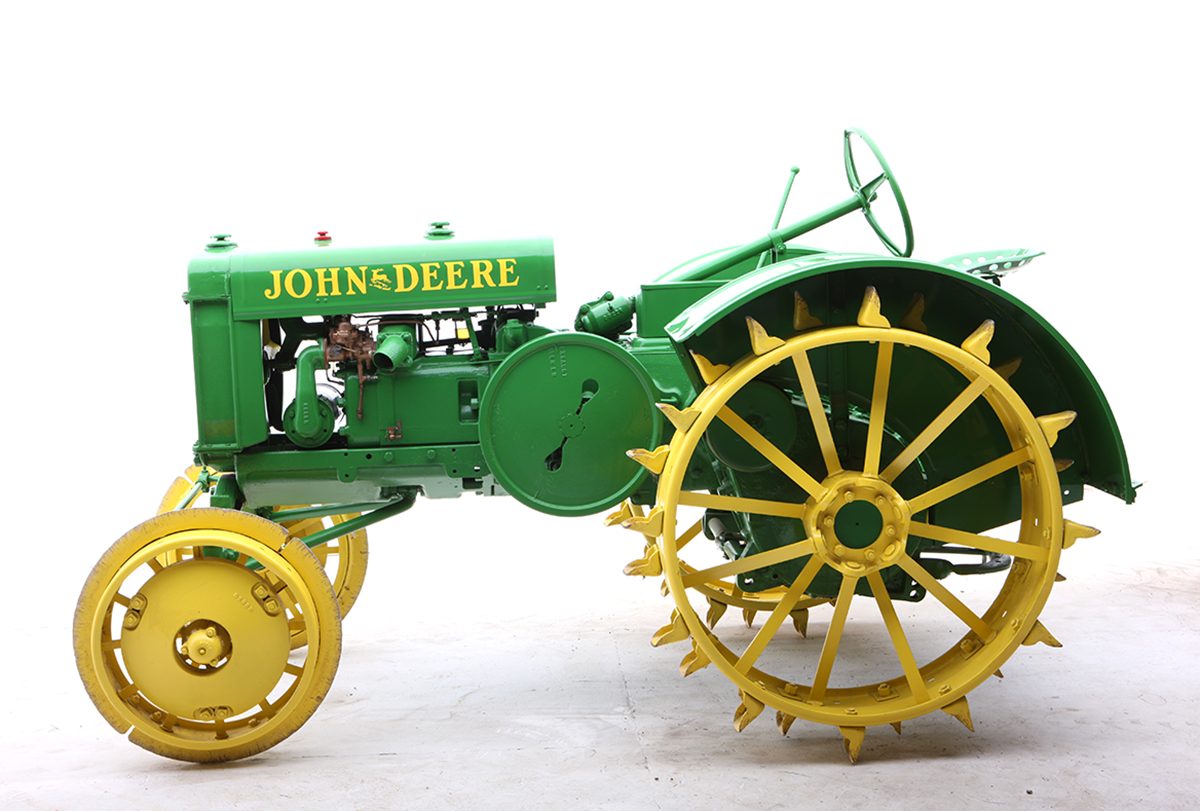 This is serial number 200109 today, currently residing in the good care of the Bruce and Walter Keller Collection. The father-son duo has more than 620 tractors, with more than 400 of those John Deeres. Lee Klancher
This is serial number 200109 today, currently residing in the good care of the Bruce and Walter Keller Collection. The father-son duo has more than 620 tractors, with more than 400 of those John Deeres. Lee Klancher
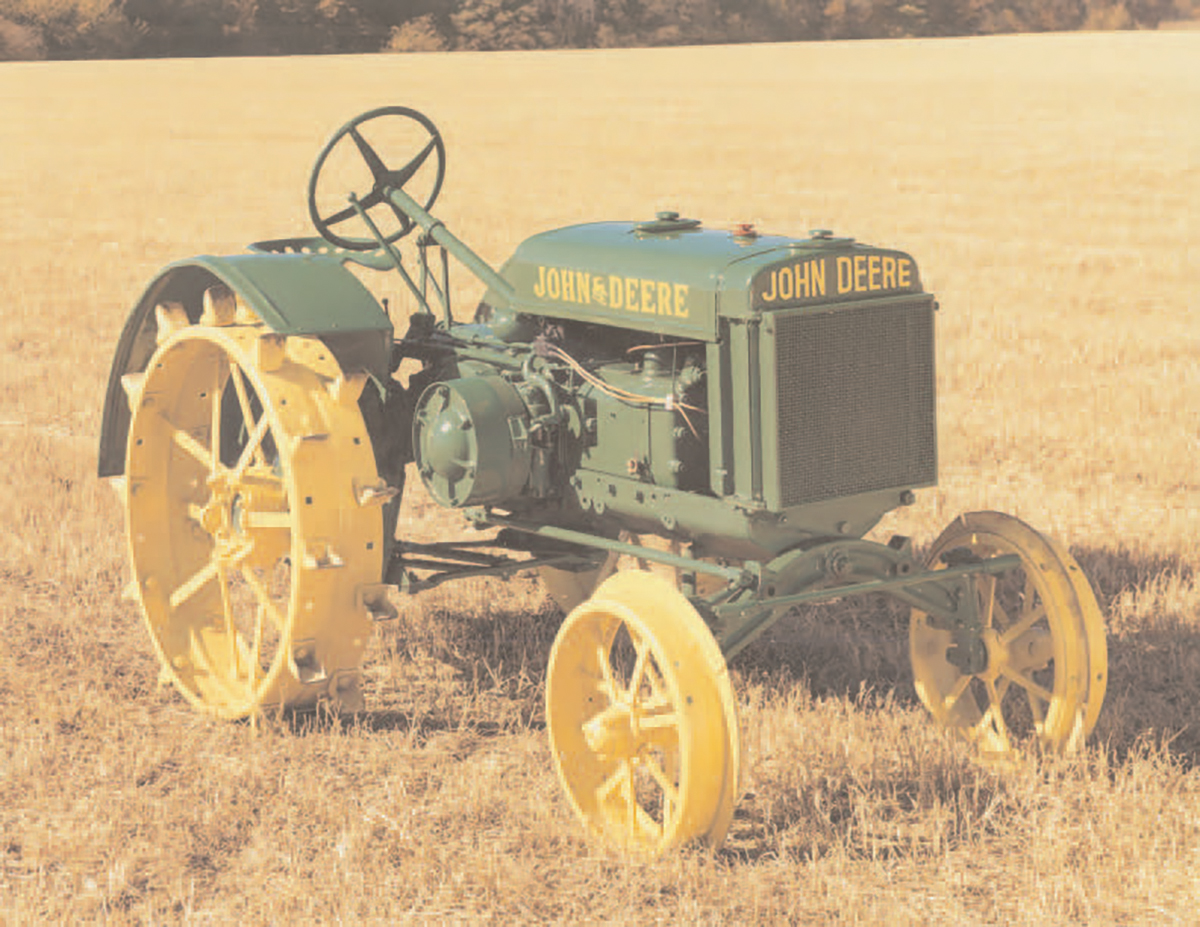 The oldest Model “C”, serial number 200109, is now owned by Walter and Bruce Keller of Brillion, Wisconsin. It may have been the first John Deere two-cylinder tractor to break the $20,000 barrier, having done so several decades ago at an auction. The photograph was taken in the “backyard” at Deere & Company Headquarters, Moline, Illinois. Photo and caption courtesy of Two-Cylinder Library
The oldest Model “C”, serial number 200109, is now owned by Walter and Bruce Keller of Brillion, Wisconsin. It may have been the first John Deere two-cylinder tractor to break the $20,000 barrier, having done so several decades ago at an auction. The photograph was taken in the “backyard” at Deere & Company Headquarters, Moline, Illinois. Photo and caption courtesy of Two-Cylinder Library
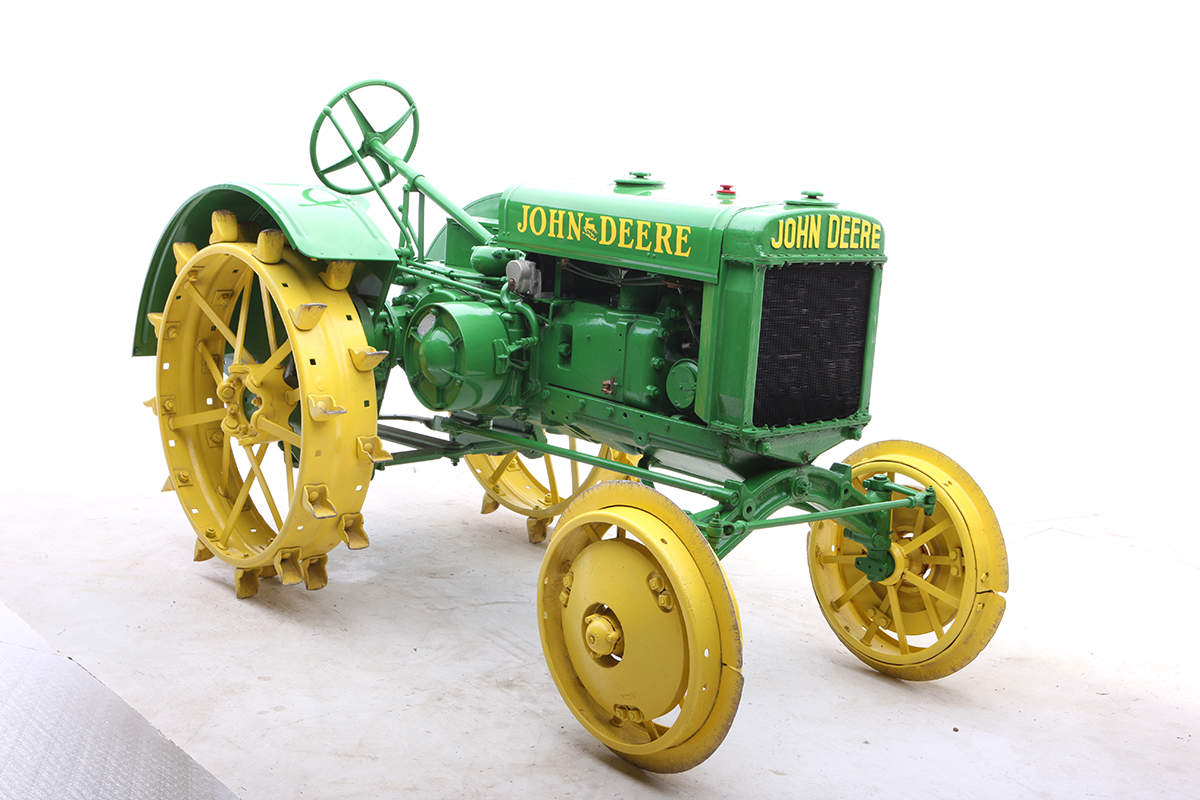 The Model C was developed after the Model D was introduced, and was designed to be a bit smaller than the D and capable of cultivating crops, hence the high-arched front bolster. Lee Klancher
The Model C was developed after the Model D was introduced, and was designed to be a bit smaller than the D and capable of cultivating crops, hence the high-arched front bolster. Lee Klancher
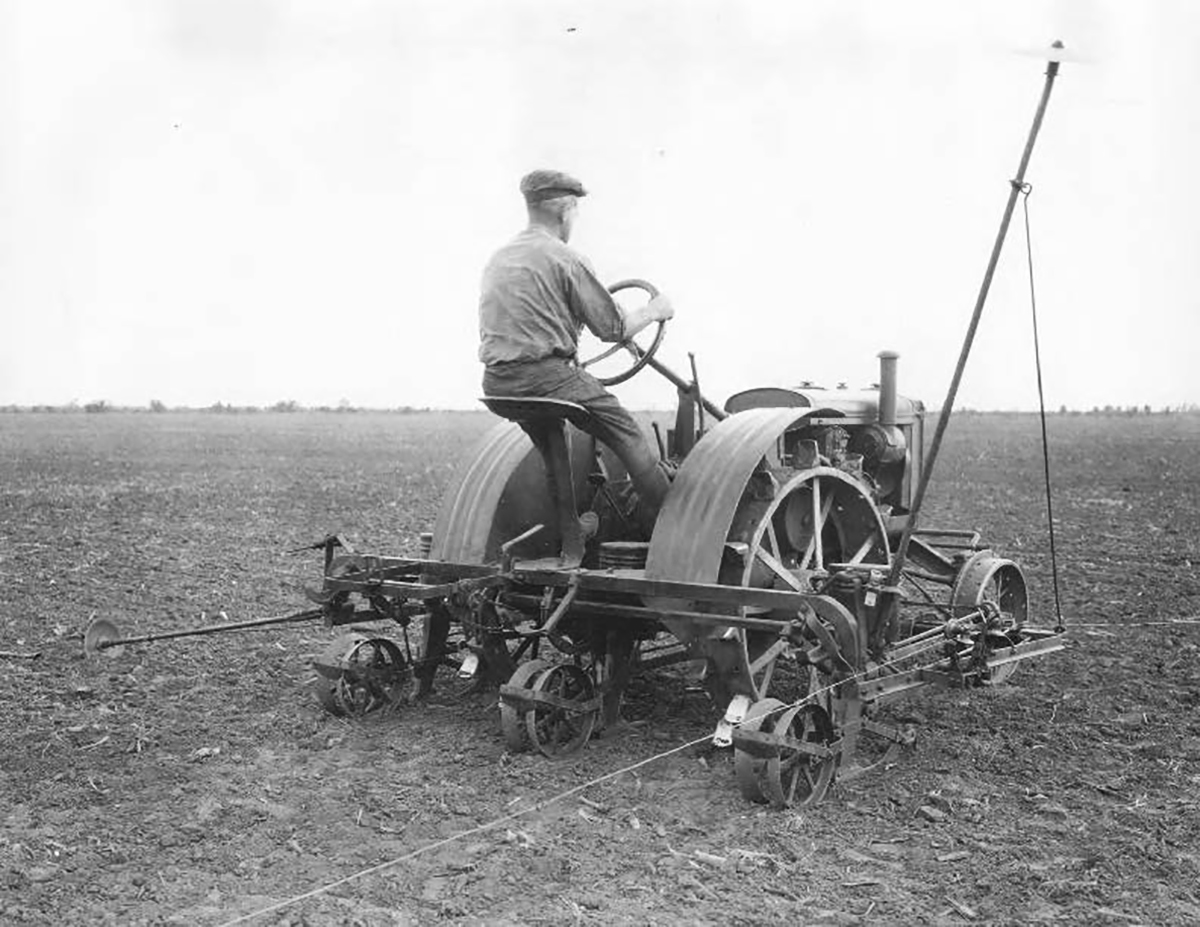 John Deere “All Crop” tractor with three-row planter in the field. Design changes continued throughout the development of a general-purpose tractor (note steering). March 22, 1927. Photo and caption courtesy of Two-Cylinder Library
John Deere “All Crop” tractor with three-row planter in the field. Design changes continued throughout the development of a general-purpose tractor (note steering). March 22, 1927. Photo and caption courtesy of Two-Cylinder Library
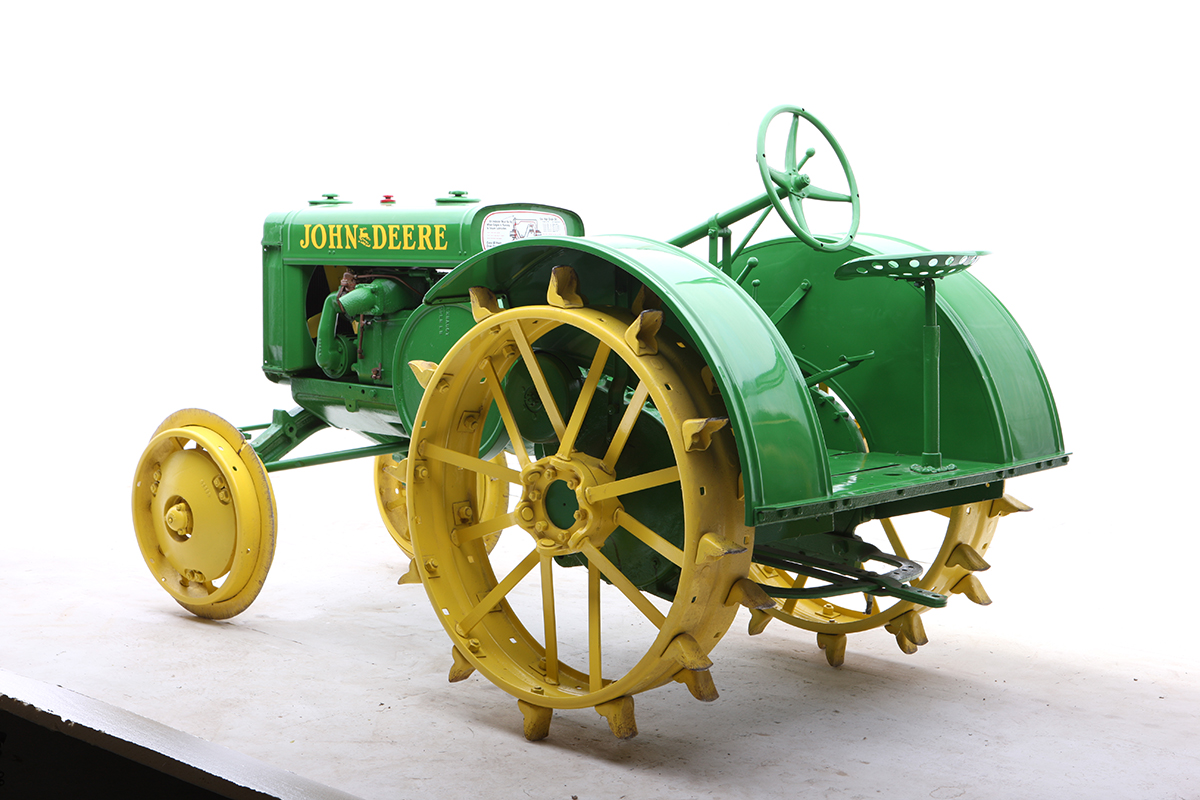 The Model C’s cockpit design was ad hoc and utilitarian. Gauges? Nonexistent. Instead, operators were treated to admonishments regarding oil-level maintenance. The Model C engine was a twin-cylinder of ill repute. Power output was deemed inadequate. Lee Klancher
The Model C’s cockpit design was ad hoc and utilitarian. Gauges? Nonexistent. Instead, operators were treated to admonishments regarding oil-level maintenance. The Model C engine was a twin-cylinder of ill repute. Power output was deemed inadequate. Lee Klancher
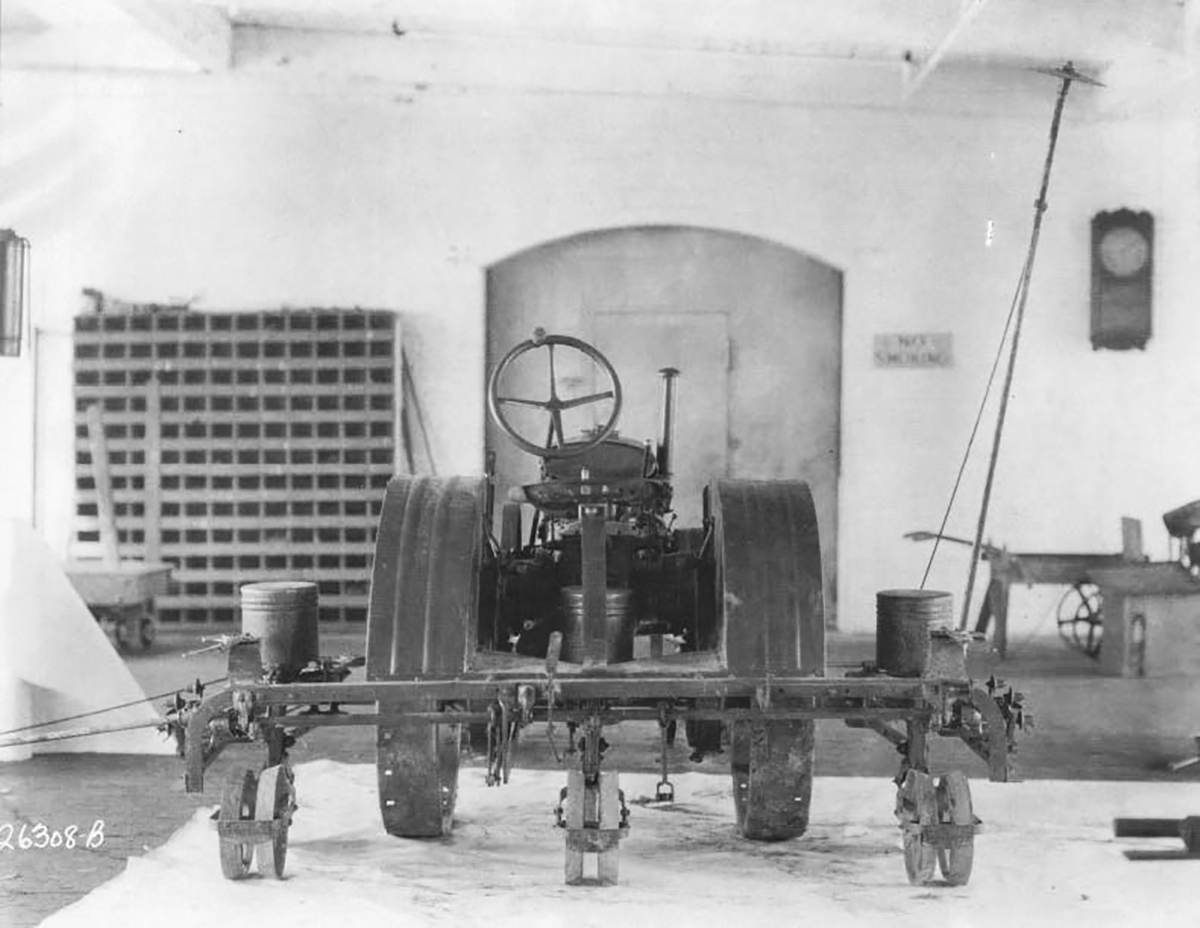 Rear view of early “All Crop” with three-row planter. Photo and caption courtesy of Two-Cylinder Library
Rear view of early “All Crop” with three-row planter. Photo and caption courtesy of Two-Cylinder Library
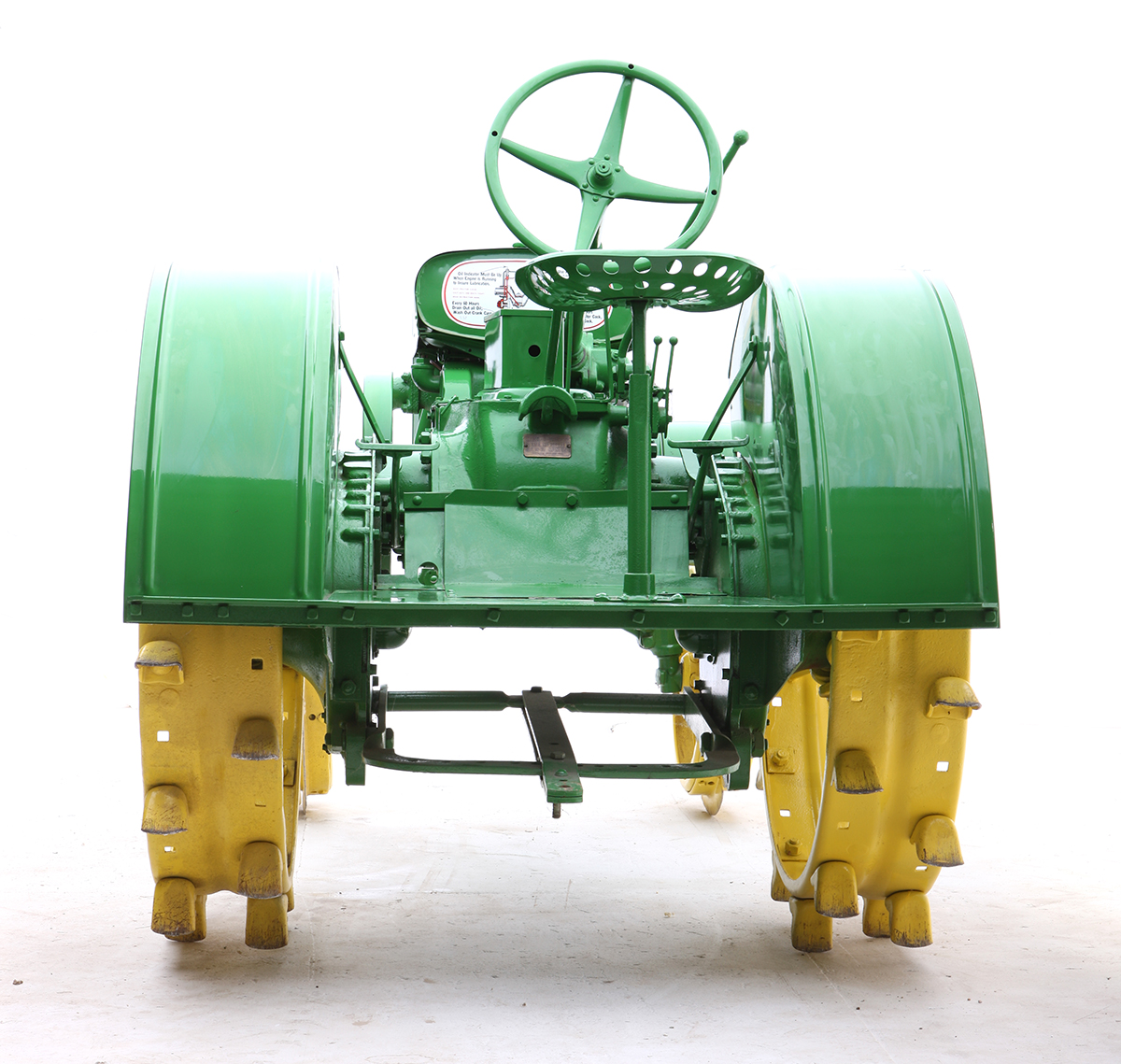 One great success developed with the C was the power-lift mechanism that raised the cultivator and other tools. In fact, the Model C was developed in conjunction with an unconventional three-row cultivator. Most cultivators available at the time were designed to work two or four rows, and the three-row model was not widely accepted or well regarded. Lee Klancher
One great success developed with the C was the power-lift mechanism that raised the cultivator and other tools. In fact, the Model C was developed in conjunction with an unconventional three-row cultivator. Most cultivators available at the time were designed to work two or four rows, and the three-row model was not widely accepted or well regarded. Lee Klancher
Read more accounts of John Deere design and innovation in The Art of the John Deere Tractor, and find us at the 2018 Gathering of the Green, March 21–23rd in Davenport, IA.
Read more accounts of John Deere design and innovation in The Art of the John Deere Tractor, and find us at the 2018 Gathering of the Green, March 21–23rd in Davenport, IA.
The Model D was an unqualified success, but International’s brand-new general purpose Farmall was creating a sensation. Deere needed a competitive machine—quickly.
The team in charge of accomplishing this was led by Theo Brown, one of the company’s star engineers. On September 30, 1925, he traveled from Waterloo to Ames, Iowa, to meet with other Deere & Company designers and establish parameters for building a successful machine. On October 5, Brown wrote that he and his team believed the new tractor could use a wide-front design with a cultivator that bolted to the frame, just ahead of the front wheels. On October 16, Brown built a model of the proposed “All-Crop” tractor, and a few days later, the team fastened a crossbar rigged with cultivators to the front of a Fordson. The hand-built unit tested better than expected.
Brown spent December 1 at the factory inspecting a full-sale mockup with Deere & Company President Charles Wiman. “The outfit looks good and the center of gravity not so high as we feared,” Brown wrote. “In two weeks they are to send the model over here and we will put on the cultivator. If everything turns out well we hope to have a tractor in the field by May 1st.”
Brown spent May 19, 1926 testing the new prototype. Refinement ensued steadily. By August 14, Brown wrote, “Our present design is about right.”
As the year wore on, Brown recorded a string of improvements along with all-day meetings spent discussing the merits of various changes. The three-row cultivator was constantly debated, but never rejected. In the spring of 1927, testing continued. Linkages were refined and the radiator was widened.
On February 23, 1928, however, Brown’s dissatisfaction with the machine was evident in his journal. “It seems to me that the view is the real problem now,” he wrote. A few days later, after testing a tricycle front-end model, he felt progress had been made on the principal problem, but he wasn’t entirely satisfied. In a move uncharacteristic for Deere & Company, the machine was sent into production anyway.
The first production Model C appeared on March 15. Its production span was incredibly short, and came to an end on April 20. A few months later, Deere & Company issued a dealer notice stating that the name of the Model C was being changed to Model GP (for “general purpose”).
More than 35,000 Model GPs were sold between 1928 and 1935. The experience taught a segmented company the importance of developing tractors and implements in concert. The Model GP had serious flaws—the three-row cultivator never worked well and the engine was underpowered. Wiman expected—and Broun would find—more satisfactory results with future machines.
The Model C was the forerunner to the Model GP, and fewer than 100 were produced between March 15 and April 20, 1928. In 1931, Deere & Company declared Model Cs “experimental.” The machines were supposed to be returned to the company, rebuilt, and returned to their owners, but at least one survived in original condition. Today it resides with the Kellers.
 The weld marks on the manifold, as well as the single rib on the fenders, are features present on “C”, serial number 200109, owned by Walter and Bruce Keller of Brillion, Wisconsin. The tractor predates the official start of “C” production. Photo and caption courtesy of Two-Cylinder Library
The weld marks on the manifold, as well as the single rib on the fenders, are features present on “C”, serial number 200109, owned by Walter and Bruce Keller of Brillion, Wisconsin. The tractor predates the official start of “C” production. Photo and caption courtesy of Two-Cylinder Library This is serial number 200109 today, currently residing in the good care of the Bruce and Walter Keller Collection. The father-son duo has more than 620 tractors, with more than 400 of those John Deeres. Lee Klancher
This is serial number 200109 today, currently residing in the good care of the Bruce and Walter Keller Collection. The father-son duo has more than 620 tractors, with more than 400 of those John Deeres. Lee Klancher The oldest Model “C”, serial number 200109, is now owned by Walter and Bruce Keller of Brillion, Wisconsin. It may have been the first John Deere two-cylinder tractor to break the $20,000 barrier, having done so several decades ago at an auction. The photograph was taken in the “backyard” at Deere & Company Headquarters, Moline, Illinois. Photo and caption courtesy of Two-Cylinder Library
The oldest Model “C”, serial number 200109, is now owned by Walter and Bruce Keller of Brillion, Wisconsin. It may have been the first John Deere two-cylinder tractor to break the $20,000 barrier, having done so several decades ago at an auction. The photograph was taken in the “backyard” at Deere & Company Headquarters, Moline, Illinois. Photo and caption courtesy of Two-Cylinder Library The Model C was developed after the Model D was introduced, and was designed to be a bit smaller than the D and capable of cultivating crops, hence the high-arched front bolster. Lee Klancher
The Model C was developed after the Model D was introduced, and was designed to be a bit smaller than the D and capable of cultivating crops, hence the high-arched front bolster. Lee Klancher John Deere “All Crop” tractor with three-row planter in the field. Design changes continued throughout the development of a general-purpose tractor (note steering). March 22, 1927. Photo and caption courtesy of Two-Cylinder Library
John Deere “All Crop” tractor with three-row planter in the field. Design changes continued throughout the development of a general-purpose tractor (note steering). March 22, 1927. Photo and caption courtesy of Two-Cylinder Library The Model C’s cockpit design was ad hoc and utilitarian. Gauges? Nonexistent. Instead, operators were treated to admonishments regarding oil-level maintenance. The Model C engine was a twin-cylinder of ill repute. Power output was deemed inadequate. Lee Klancher
The Model C’s cockpit design was ad hoc and utilitarian. Gauges? Nonexistent. Instead, operators were treated to admonishments regarding oil-level maintenance. The Model C engine was a twin-cylinder of ill repute. Power output was deemed inadequate. Lee Klancher Rear view of early “All Crop” with three-row planter. Photo and caption courtesy of Two-Cylinder Library
Rear view of early “All Crop” with three-row planter. Photo and caption courtesy of Two-Cylinder Library One great success developed with the C was the power-lift mechanism that raised the cultivator and other tools. In fact, the Model C was developed in conjunction with an unconventional three-row cultivator. Most cultivators available at the time were designed to work two or four rows, and the three-row model was not widely accepted or well regarded. Lee Klancher
One great success developed with the C was the power-lift mechanism that raised the cultivator and other tools. In fact, the Model C was developed in conjunction with an unconventional three-row cultivator. Most cultivators available at the time were designed to work two or four rows, and the three-row model was not widely accepted or well regarded. Lee KlancherRead more accounts of John Deere design and innovation in The Art of the John Deere Tractor, and find us at the 2018 Gathering of the Green, March 21–23rd in Davenport, IA.


